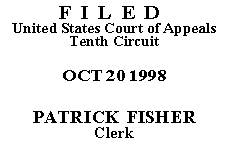

| INEZ KOOPMAN,
Plaintiff-Appellant, v. KENNETH S. APFEL, Commissioner, Social Security Administration,(*) Defendant-Appellee. |
|
Claimant Inez Koopman appeals from the district court's judgment affirming the Commissioner's decision denying her claim for disability insurance benefits at step five of the five-part process for determining disability, see 20 C.F.R. § 404.1520. In what now stands as the final decision of the Commissioner, the administrative law judge determined that claimant was severely impaired by high blood pressure, angina, and back pain, and that while she could not return to her past relevant work as a cook and housekeeper, she retained the functional capacity to perform the full range of light work reduced by a sit or stand option. Relying on a vocational expert's testimony, the ALJ found that there were jobs available that claimant could perform with this limitation and thus found her not to be disabled. We review the Commissioner's decision to determine whether factual findings are supported by substantial evidence and whether correct legal standards were applied. See Winfrey v. Chater, 92 F.3d 1017, 1019 (10th Cir. 1996).
On appeal, claimant contends generally that the ALJ's step-five decision is not supported by substantial evidence and that the ALJ failed to meet his burden of showing that there were jobs in the economy that claimant could perform. Specifically, she contends that the ALJ erred by relying on the Medical-Vocational Guidelines, 20 C.F.R. Pt. 404, Subpt. P., App. 2 (the "grids") because her residual functional capacity (RFC) did not precisely match the definition of light work and therefore there was "no 'exact fit' to place this Appellant on the Grid of nondisability." Appellant's Br. at 11. Claimant's argument relies primarily on Talbot v. Heckler, 814 F.2d 1456, 1463 (10th Cir. 1987) ("Alternate sitting, standing, or walking by implication precludes the kind of extensive sitting, standing and walking contemplated by the definition of light activity."). Claimant contends that since she cannot do the full range of light work, she is presumptively able to do only sedentary work, and given her age, education and lack of transferable skills, she should be considered disabled under the grids, Rule 201.10.
The flaw in claimant's argument is that she completely misperceives the ALJ's basis for finding that there were jobs she could perform despite her impairments. While the ALJ did say that he was using the grids as a framework for his analysis, it is clear that he based his ultimate determination that claimant was not disabled on the testimony of a vocational expert. The ALJ found that claimant could do the full range of light work reduced by a sit or stand option. Because her RFC did not precisely fit the definition of light work, the ALJ could not rely solely on the grids for his determination. See Daniels v. Apfel, ___ F.3d ___, No. 98-5004, 1998 WL 515160, at *2 (10th Cir. Aug. 18, 1998 ). And because the ALJ could not and did not rely on the grids, claimant's reliance on Talbot is misplaced. While Talbot did say that an alternating sitting, standing and walking requirement was inconsistent with being able to do the full range of light work, Talbot is a grids case, 814 F.2d at 1459, where the exact fit or perfect match is generally required.
Here, claimant's RFC was less than the full range of light work, but that does not mean that it is presumed to be limited to sedentary work. Claimant could perform the lifting requirements of light work, which exceed those for sedentary work, but could not stand as much as the definition of light work required. She thus fell between the two RFC levels, one of which under the grids would have indicated a finding of disability (sedentary) and the other a finding of nondisability (light). Faced with this situation, the ALJ did exactly what he should have done--he turned to a vocational expert.
In situations where the rules would direct different conclusions, and the individual's exertional limitations are somewhere "in the middle" in terms of the regulatory criteria for exertional ranges of work, more difficult judgments are involved as to the sufficiency of the remaining occupational base to support a conclusion as to disability. Accordingly, [vocational expert] assistance is advisable for these types of cases.
S.S.R. 83-12, 1983 WL 31253, at *3. The vocational expert identified a variety of light exertional level jobs that claimant could perform with a sit-stand option, and the ALJ properly relied on this testimony.
Claimant also appears to argue that the ALJ erred by failing to consider the vocational expert's testimony, in response to hypothetical questions asked by claimant's counsel, that there would be no jobs claimant could perform if she were unable to make repetitive use of her left extremities due to weakness on that side of her body. The ALJ did not find that claimant was impaired in her use of her left extremities, and claimant does not contend that this lack of a finding was error. The ALJ therefore was under no obligation to consider the vocational expert's testimony. See Decker v. Chater, 86 F.3d 953, 955 (10th Cir.1996) (hypothetical questions to the VE need only reflect impairments and limitations that are borne out by the evidentiary record).
The judgment of the United States District Court for the Eastern District of Oklahoma is AFFIRMED.
Entered for the Court
Circuit Judge
*. Pursuant to Fed. R. App. P. 43(c), Kenneth S. Apfel is substituted for John J. Callahan, former Acting Commissioner of Social Security, as the defendant in this action.
**. This order and judgment is not binding precedent, except under the doctrines of law of the case, res judicata, and collateral estoppel. The court generally disfavors the citation of orders and judgments; nevertheless, an order and judgment may be cited under the terms and conditions of 10th Cir. R. 36.3.